We are Parallax Photographic. We sell film, paper, chemistry, and everything else you need if you are shooting film. The four of us: Alice, Frank, Sam and Sol, set up Parallax in 2016 with the intention to support the use of film, and love of photography, into the future. You can come and visit our shop in Brixton, to browse, buy things or just have a chat.
We all shoot film and process it ourselves so have fairly extensive knowledge of the products we sell. Our reviews are based on our combined years of experience doing it ourselves and helping our customers.
You’ll be surprised at how easy it is to develop your own colour film. We meet an increasing amount of people who have decided to start doing it themselves. It’s a sensible decision – it’s surprisingly simple and can save you huge amounts of money. You also get the satisfaction of working with your film from start to finish, which means you learn a lot more, and you know how it’s handled. Pretty much every person we meet has been told somewhere that developing black-and-white film at home is reasonable, but that developing colour film is just too tricky. But this is a myth. Developing your own colour film at home is not only completely possible, it is fun and arguably more straightforward than black-and-white. Once we explain how simple it is, our customers are often keen to try it themselves. Hopefully, this review might convince you to give it a try.
As you might know, colour film has two common development processes. These are called C41 and E6. You can do both at home, as long as you have the correct chemistry. Which process you need depends on the film you are developing. Colour negative film is easily the most common and needs C41 chemistry. Reversal film, otherwise known as slide film, needs E6 chemistry. For this review, we are going to focus on C41 developing as most colour films available today are negative, and they are by far the most popular option of the two.
When it comes to colour film processing you buy all the chemistry you need together in a single kit. Our go-to recommendation is the Tetenal Colortec C-41 Developing Kit. It has been specially designed for easy development of C41 negative film, and in all the years we have been using and selling it, it has never let us down. In the kit, you get all the chemicals you need to process your own colour negative film, which makes things nice and simple.
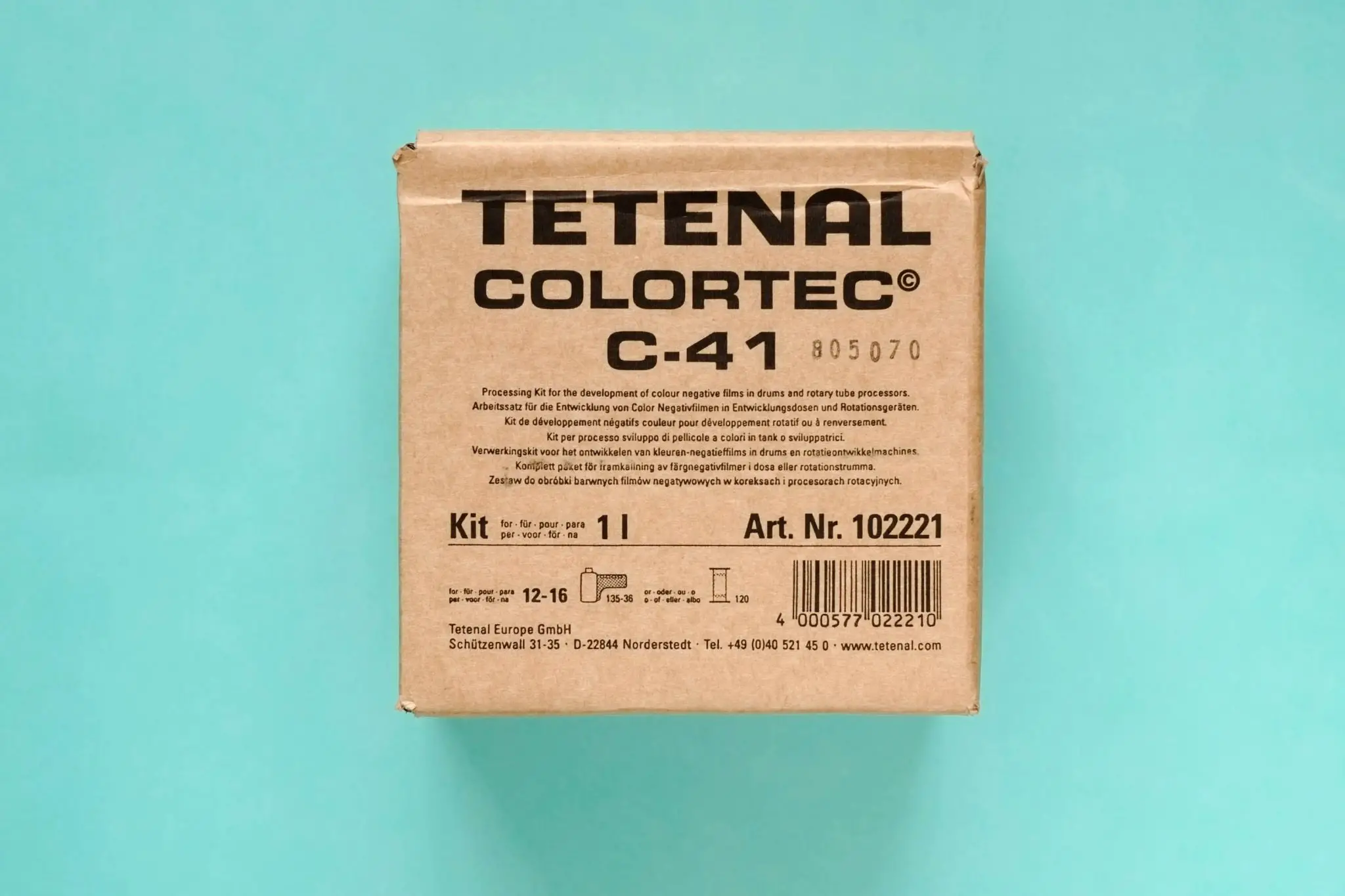
To develop your film you will also need some equipment. If you are already processing your own black-and-white film you will have most items you need. The main difference is that you will need a thermometer that goes up past 30 degrees Celcius. Some developing thermometers don’t, so this is well worth checking before you start. If you are completely new to developing at home, you can get everything required in our Colour Film Processing Bundle. All the items are also available individually. The essentials you are going to need are a developing tank, a changing bag, colour thermometer, mixing jugs, storage bottles and a large bucket or tub to act as a water bath.
There are several benefits which make the Tetenal kit a good choice for a beginner. To start with, unlike some of the other options, the kits are available in convenient sizes for home usage – 1L and 2.5L. Colour chemistry is best when fresh. You don’t want to be storing lots of it for long periods, so buying a suitable amount is important for maintaining consistent results. The 1L kit is clearly best if you don’t have too many rolls to develop at one time, but bear in mind that the 2.5L version gives you substantially better value for money per roll.
Additionally, they are simple to mix up. The Tetenal Colortec C-41 Developing Kit is a two-bath kit, which means that it has been made so there are only two steps to develop and fix the film. Not all colour film developing is so simple. Clearly, the fewer steps there are, the less opportunity there is to make a mistake and so, make it a much simpler process to learn. We are fans of making things simple. By combining stages of development, the kit cuts down on preparation time, as well as reducing the time it takes to develop a roll of film. This makes the kit quicker, and quicker means more convenient.
The 1L kit will develop anywhere between 12 to 16 rolls of film, and some customers have reported being able to go beyond this number. The 1 litre kit comprises six 200ml bottles of chemistry to mix up 1L of working solution of each chemical; three bottles mix with water to make the colour developer, two combine for the bleach-fix (known as ‘blix’) and one is for the stabilizer.
When you open the box you’ll see all six bottles clearly labelled and a booklet of instructions. We particularly like that you don’t need to do any maths when mixing up the chemicals with this kit. It all quite simple. For each step, you mix its chemicals together and top up with water to make 1L.
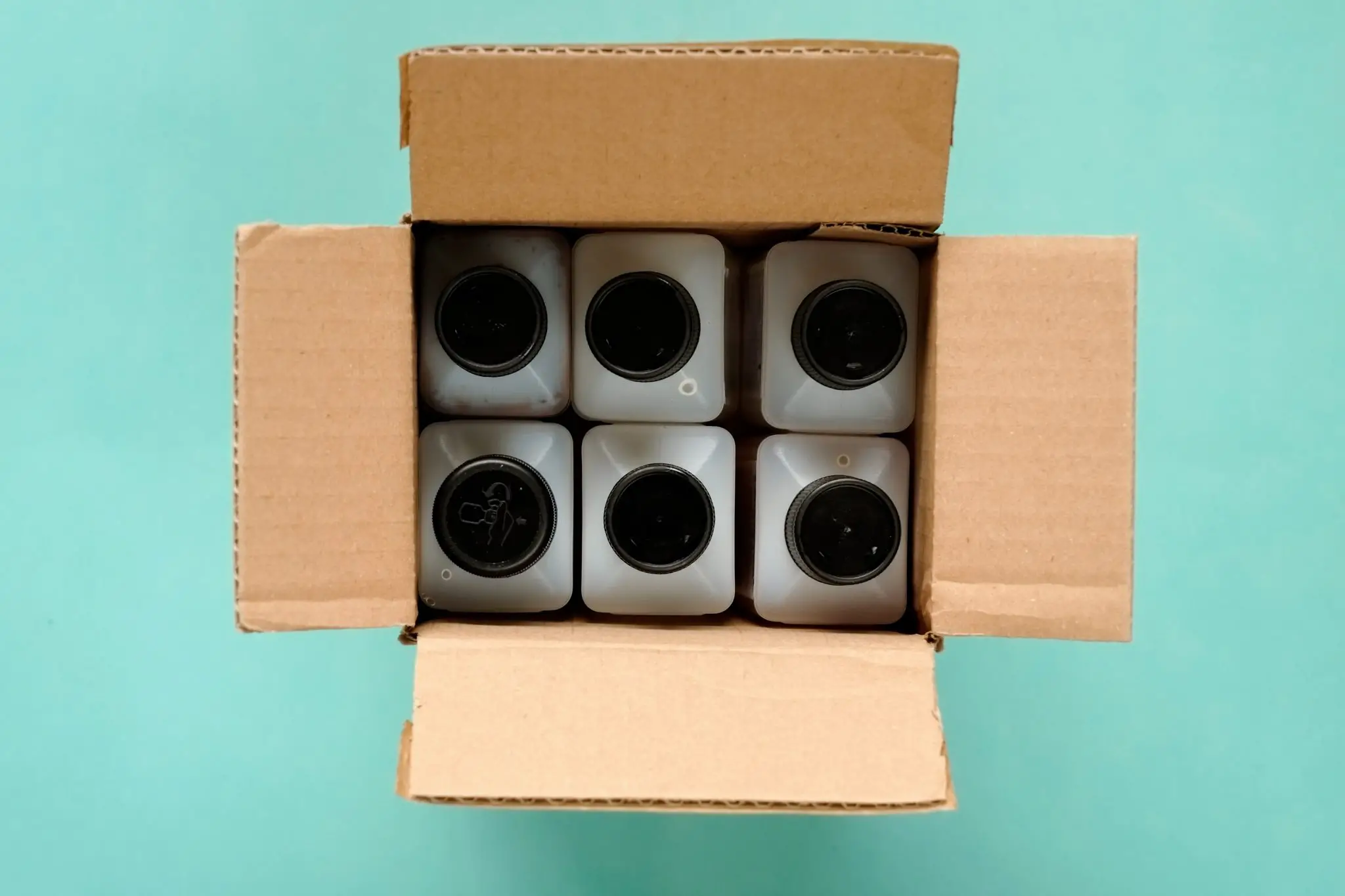
You mix up your developer first. This comes in three 200ml bottles; part 1, part 2 and part 3. Pour each bottle, in order, into a mixing jug. Top this up with 400ml of water to make 1L of the developer. Next up is the bleach-fix. Here you will have two 200ml bottles. Pour part 1 and part 2 into a mixing jug, then top up with water to make your 1L solution. Last to be mixed up is the stabilizer. Add the one 200ml bottle to 800ml of water to make your 1L solution.
You’ll need three empty 1L bottles to store the mixed up chemicals in. Don’t keep them in oversized bottles because the chemicals will oxidise with air inside and your chemistry will start to go off.
Once you have mixed up the developer, blix and stabilizer into your bottles you are ready to go. This is where the larger container of water (like a bucket or plastic storage tub) comes in handy. If your developer is below 30°C fill the container with warm water and set the mixed up chemistry in it. This will bring it up to temperature and maintain it until you’re ready to use it. This is easier if it’s in a storage bottle as there is no chance of it being contaminated by the water.
The big difference when you process colour film as opposed to black-and-white is the temperature of the chemistry. Whereas with black-and-white film you use your developer at 20°C, with colour it needs to be higher. The Tetenal kit gives times for 38°C and 30°C. We would always recommend the lower temperature when agitating by hand. It extends the development time and will give a more even result. These are called the ‘Alternative Development’ instructions in the booklet and they are on page 5.
It is important to maintain the chemistry at 30°C when you process colour film. To avoid a temperature drop, and to prepare your film, you need to warm the tank up. To do this, fill your tank, with the film already loaded, with 30°C water for 5 minutes before starting to develop. After 5 minutes you can pour the water away.
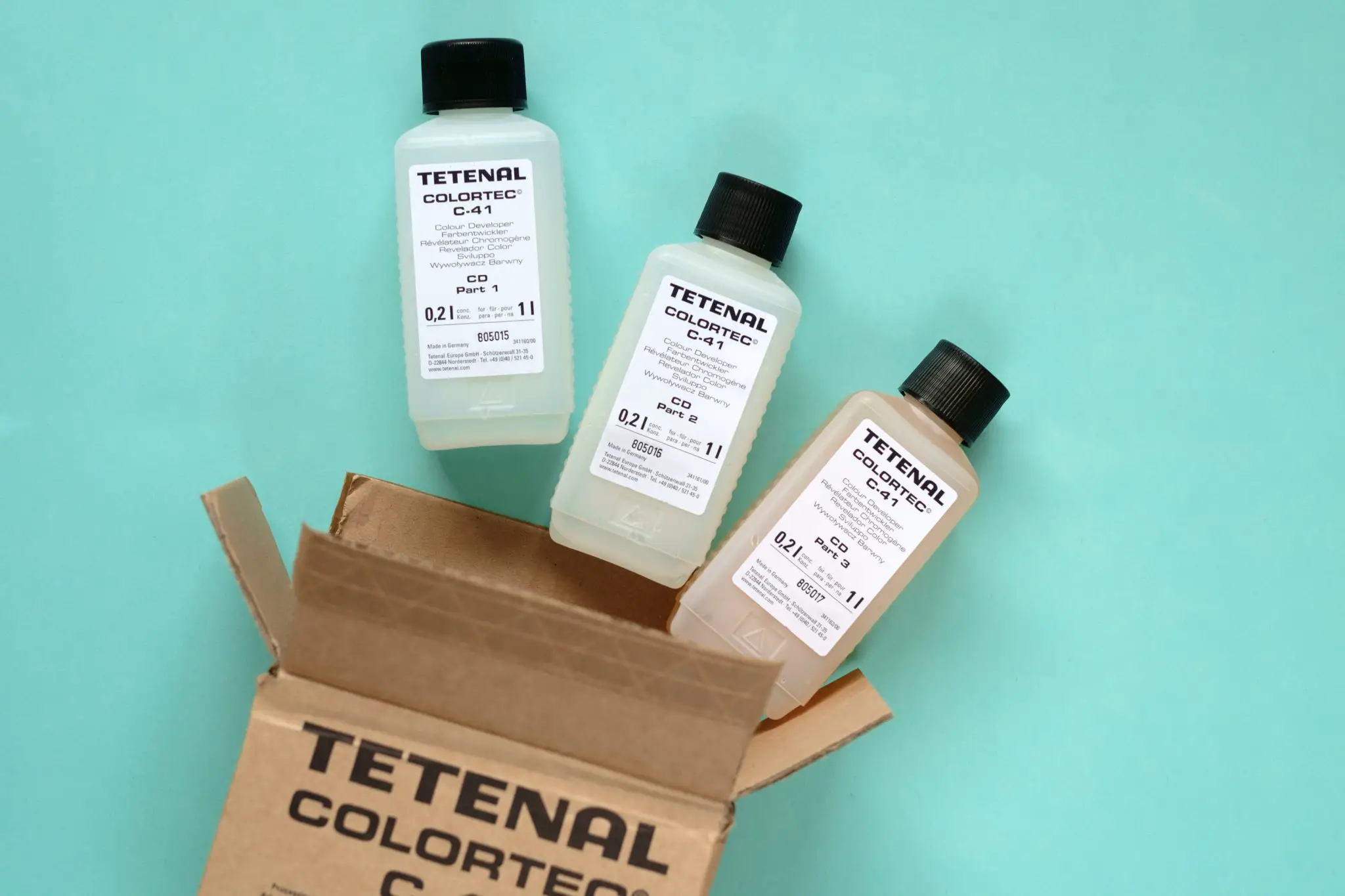
At this stage, you are ready to start processing your film. The first chemical to go in is the developer. Check it is at the correct temperature and set a timer going (a clock or your phone will work fine for this) and pour it in. Agitate the film by turning the tank upside down, then back up again. You will need to continually agitate for the whole of the development time.
For the first four rolls, the development time is 8 minutes. This increases to 9 minutes for rolls 5-8, 10 minutes for rolls 9-12 and, finally, 11 minutes for rolls 13-16.
If you are processing in a particularly cold space, you will want to place the tank into the water jacket for a few seconds every minute as it will help maintain the temperature of the developer. The container of water that your chemicals are in is perfect for this. The reason for keeping the temperature at 30°C throughout is to maintain consistency each time you develop.
As the development time nears the end get ready to pour out the developer. It’s good to have a jug ready, or a funnel, so you can pour the developer into your storage container.
Once you have started your timer, pour in the bleach-fix. Again, you need to agitate throughout. This can be avoided by using the agitator that comes with Paterson developing tanks. In fact, this method of agitation can be used throughout each stage of colour processing which can save arm power. It also allows you to stand the tank in a bath of water throughout to maintain temperature so it is well worth trying if you can.
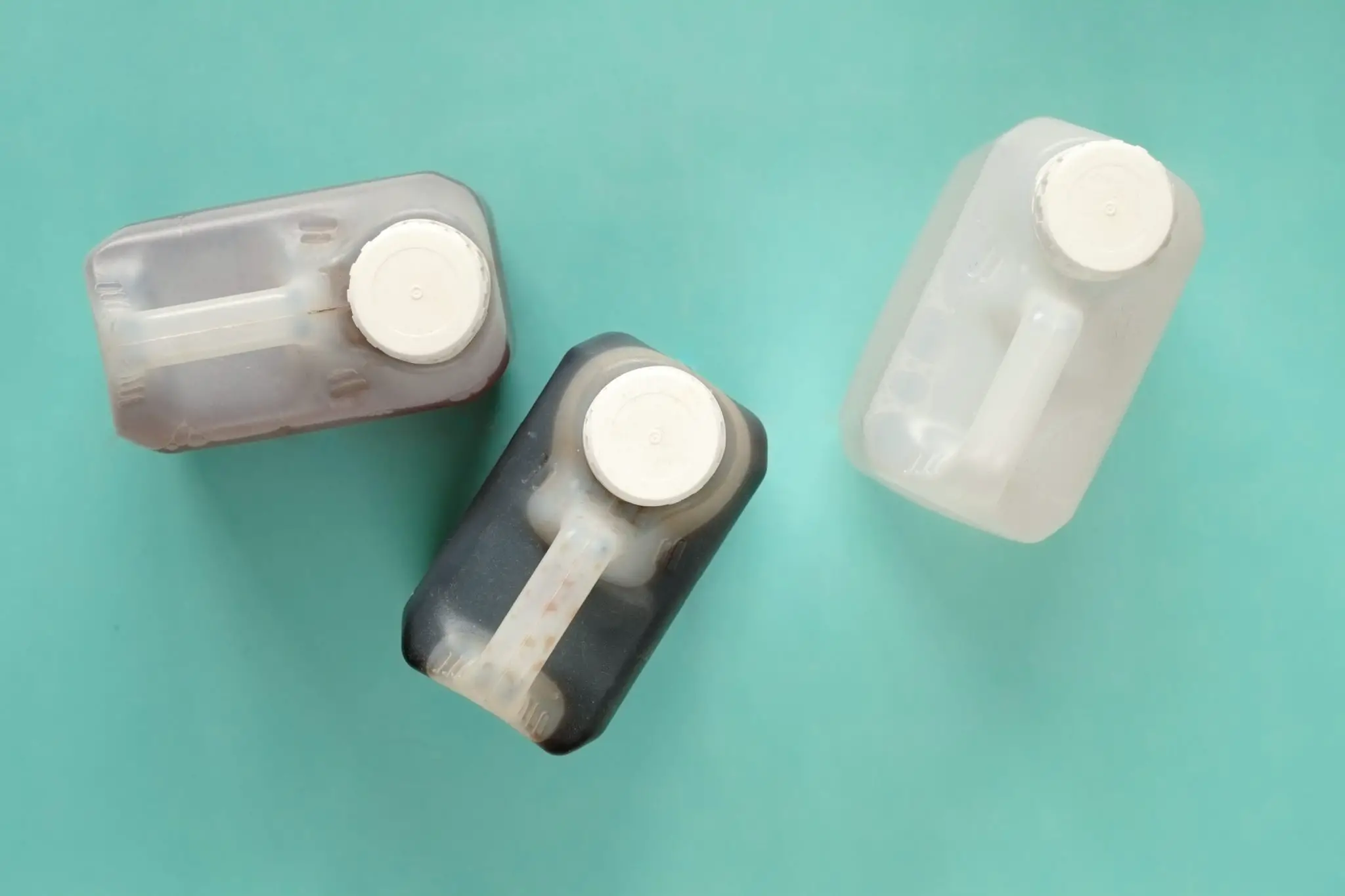
Tetenal recommends you extend the bleach-fix every four rolls. So 6 minutes for first four you process, 8 minutes for rolls 5-8, then 12 minutes for rolls 9-12 and, finally, 20 minutes for rolls 13-16. We have noticed that the Blix seems to seep out more than other chemicals we’ve used, don’t be surprised if you find it leaking a little bit. Protective gloves can be useful if you want to avoid getting your hands messy. It is also worth mentioning that you can’t over Blix, so if in doubt leave it a bit longer.
After the blix you need to wash the film. Make sure the funnel lid on the tank is in place and leave it under running water for 6 minutes. If you can’t leave the tank under running water, fill and empty the tank every 30 seconds. It is important that you don’t contaminate the Stabilizer, so make sure you have thoroughly washed your film before moving onto the next step.
Finally, empty the tank, pour in the stabilizer, and agitate for 1 minute. Stabilizer will prevent any change in the colours over time. Leave to soak for a minute then hang up to dry. You can use your fingers, chamois leather or squeegee to wipe the excess water from the film before you hang it up. If you attach one clip at the top and one at the bottom it will help to prevent curly film once it’s dry. That is all there is to it. You should now be able to see your fully developed film.
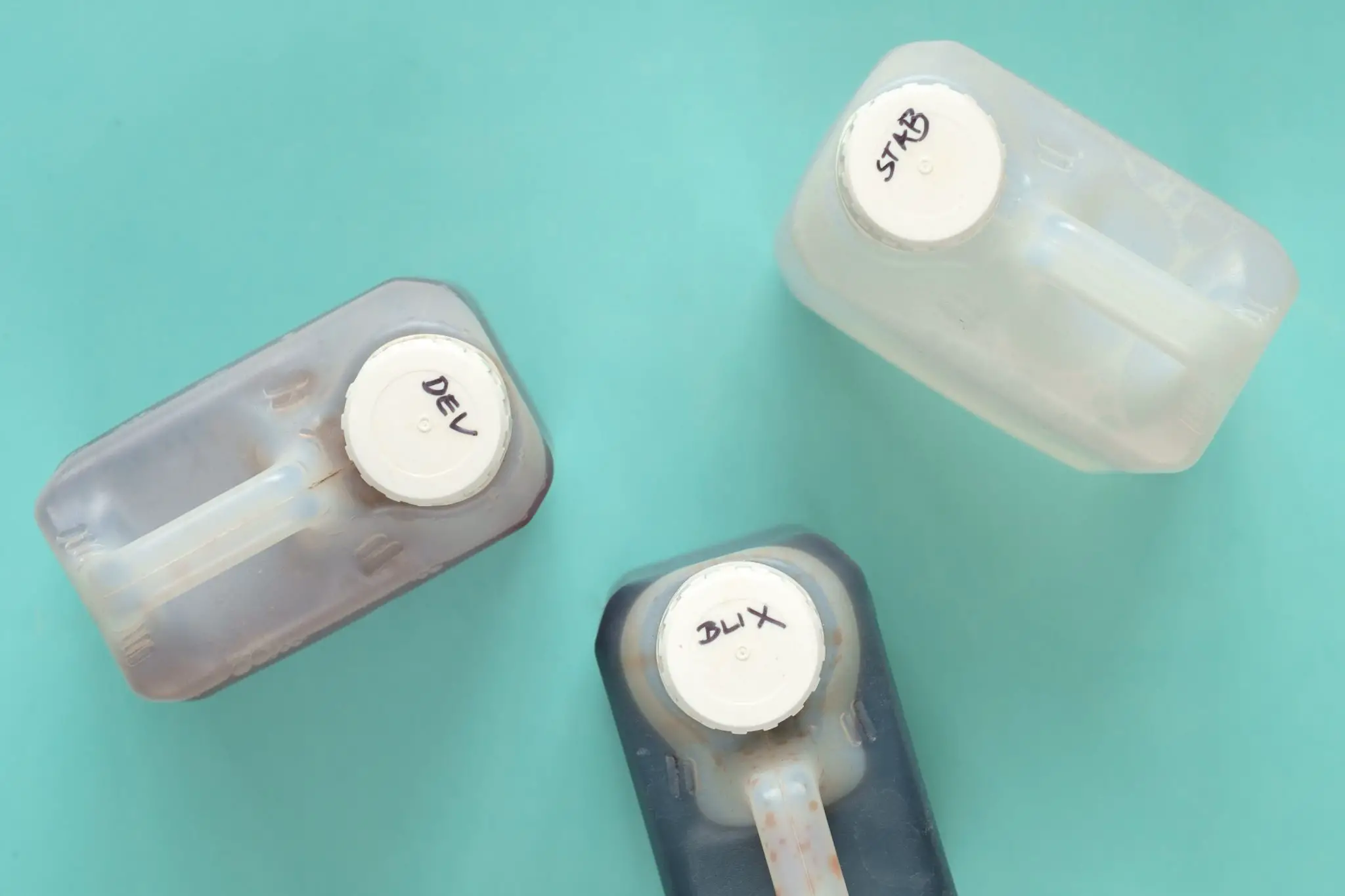
A few things to bear in mind. Tetenal suggests that to get the best yield rate out of the chemicals, you process at least four rolls of film at a time. Also, high ISO film will exhaust the developer at a faster rate, so be prepared to get fewer rolls through a kit if you shoot 800 and above.
Although the kit works well, the Tetenal instructions aren’t always the easiest to follow at first. The good thing is once you’ve prepared your chemicals you really only need the developing times which are on page 5.
So whether you already process your own black-and-white film, or have never developed any film before, you should consider processing your colour film. It’s more straightforward than you might have realised. You can browse the Tetenal Kit options on our website. If you are completely new to film developing you can get everything you need in our Colour Film Processing Bundle.
All the products mentioned in this article are available in our London shop or online from our website – parallaxphotographic.coop
Share this post:
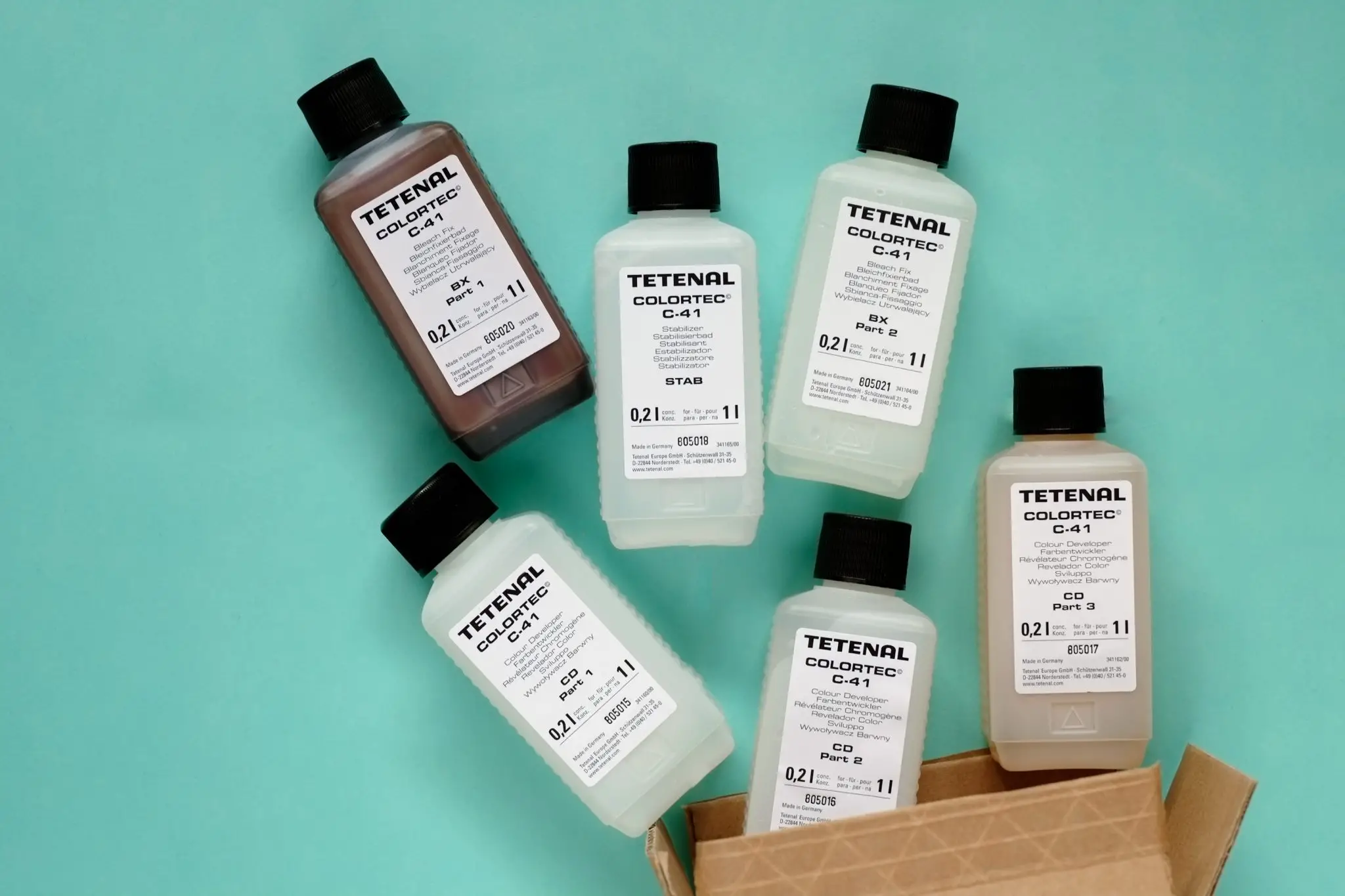








Comments
paul snaith on Tetenal Colortec C-41 Developing Kit – By Parallax Photographic
Comment posted: 13/05/2018
Comment posted: 13/05/2018
James on Tetenal Colortec C-41 Developing Kit – By Parallax Photographic
Comment posted: 13/05/2018
Jürgen Schütz on Tetenal Colortec C-41 Developing Kit – By Parallax Photographic
Comment posted: 13/05/2018
I´m using this kit and it really works very nice. Different, but not more complicated than B/W development. I´m using it for 135, 120 and 4x5 film.
StephenJ on Tetenal Colortec C-41 Developing Kit – By Parallax Photographic
Comment posted: 13/05/2018
However, I have since found one that I find better in almost every way, you would not go far wrong by investigating the idea of keeping a stock for your shelves.
It is made by Bellini.it an Italian company that has been in operation since 1988.
The developer is a concentrate that comes in a 100ml bottle to make a litre. Depending on the type of colour film I am processing, I will make either a 1/4 litre or a 1/2 at a time. Film needs to be dipped and gently agitated in this for 3mins 15seconds.
35mm can easily be developed in the smaller amount, but 120 is happier in 1/2. Obviously you can add another 1/4 to a pre-made 1/4. But the idea is to keep as much in concentrated form as practical in order to eke it out over a longer period. The developer lasts for loads of rolls, it has never let me down... It think I have developed more than twenty films in the two kits that I have purchased ... so far.
The bleach is supplied as a litre and does not require diluting or mixing. So, same as above, use a 1/4 or 1/2 depending on the type of film. Bathe the developed film in bleach for 45 seconds.
The fix is a 50% concentrate, so 1/2 litre makes 1 litre. you bathe the bleached film in this for 1min 30seconds.
Then there is a 100ml bottle of stabiliser and you use a few drops of this to make enough for three "use once" baths. There is plenty of this and total bath time for stab is 3mins.
That is it!
It is the quickest, simplest c41 process. The company also does a E6 kit, but I haven't tried that.
Comment posted: 13/05/2018
jim on Tetenal Colortec C-41 Developing Kit – By Parallax Photographic
Comment posted: 13/05/2018
Davd on Tetenal Colortec C-41 Developing Kit – By Parallax Photographic
Comment posted: 13/05/2018
Malcolm Myers on Tetenal Colortec C-41 Developing Kit – By Parallax Photographic
Comment posted: 14/05/2018
Raphael Zydek on Tetenal Colortec C-41 Developing Kit – By Parallax Photographic
Comment posted: 15/05/2018
Cheers!
Comment posted: 15/05/2018
Neil on Tetenal Colortec C-41 Developing Kit – By Parallax Photographic
Comment posted: 15/05/2018
Comment posted: 15/05/2018
Comment posted: 15/05/2018
davhill on Tetenal Colortec C-41 Developing Kit – By Parallax Photographic
Comment posted: 22/05/2018
Jakub on Tetenal Colortec C-41 Developing Kit – By Parallax Photographic
Comment posted: 24/02/2019
i like to try it. I will use 1.5L solution with 5 rolls at once. Tetenal recomend 9Min @30°C in 1L. Since i have 500ml more, do it change the dev.time somehow?
Thanks in advice.
Der erste Versuch in C41 – Kaptisto de Lumo on Tetenal Colortec C-41 Developing Kit – By Parallax Photographic
Comment posted: 10/06/2019
Alex B on Tetenal Colortec C-41 Developing Kit – By Parallax Photographic
Comment posted: 18/06/2019
Ps picked up the black and white kit from you and really enjoying using it, shocked how easy that was hence moving to colour.
ALI on Tetenal Colortec C-41 Developing Kit – By Parallax Photographic
Comment posted: 16/11/2020